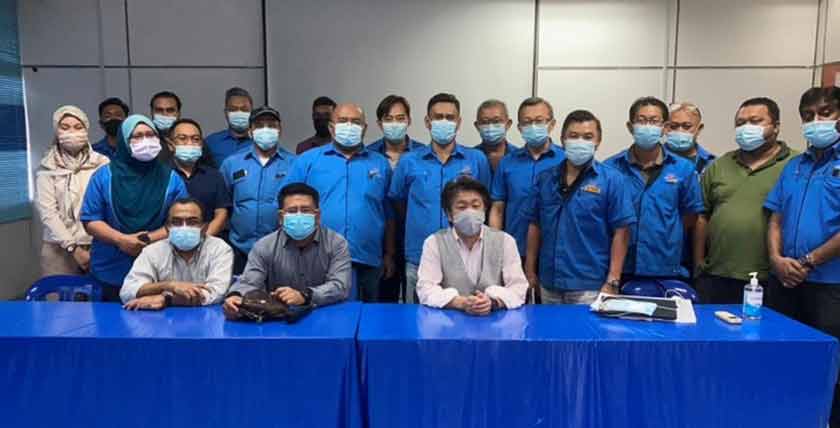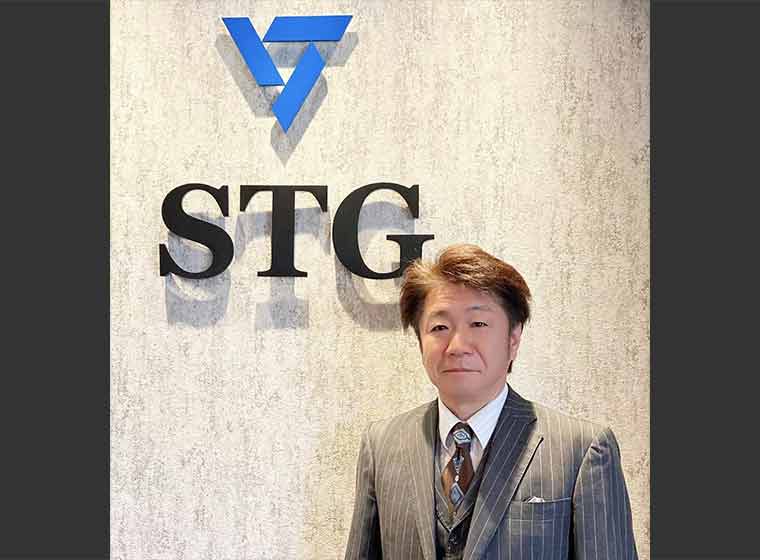When did Mr. Sato start thinking about expanding overseas?
Mr. Sato: Around the year 2000, the production of consumer electronics in particular began to move to China. At that time, magnesium components were our core business dealing with the world's leading computer manufacturers, and computers were also being actively produced in China. That's why we established a local subsidiary in China in 2006, which marked the beginning of our overseas expansion.
The next step was to expand into Thailand. This was because magnesium is also used in the bodies of high-end SLR cameras, and the major camera manufacturers were shifting production to Thailand. I predicted that the trend would be to source components and assemble them locally, rather than export them from Japan, and I felt that we had to go with the flow, or we would not survive. So, we set up a local factory in Thailand in 2011.
However, I learnt then that it would take too much time to set up a production base from scratch and get it on the track. There are many tasks that need to be addressed, such as building the factory and facilities, hiring staff, and acquiring customers, and so on.
Do you have any experience in M&A before?
Mr. Sato: Yes, we have one in Japan. In 2009, a primary magnesium processing company in Shizuoka, which was one of our suppliers, went bankrupt due to the financial crisis caused by the collapse of Lehman Brothers in 2008 and other factors, and was placed under civil rehabilitation. At that time, although I became its bankruptcy trustee, I had the idea that integrated production from primary to secondary processing would greatly improve our competitiveness. Hence, I decided to take over the company and turned it into a subsidiary in 2010.
What was the aim in acquisition of STX?
Mr. Sato: It was to expand our business area to enter the aluminum market in earnest, rather than just staying in the magnesium market. Fortunately, since our listing on the Tokyo PRO Market in 2019, we have received many proposals for M&A. At the beginning, we were considering domestic opportunities, but in August 2020, our bank brought us information about a company in Malaysia. The company was STX and we were interested in it because we hoped to enter a country in South Asia with a relatively stable economy, and STX's business was the same as ours although the material of the products was different. We were then convinced that acquisition of STX could be expected synergy.
[M&A Schedule]
TOP meeting: 22 October 2020
Signing of Letter Of Intent: 26 November 2020
Last contract date: 26 March 2021
Using web meeting system, the contract was concluded quickly, in about six months from matching to final contract.
You conducted all the negotiations remotely because of the COVID-19 pandemic situation, didn't you?
Mr. Sato: As a manufacturer, the manufacturing site is the most important fact, so I'd like to decide after visiting their site, but we couldn't because of the Covid. We had a very uneasy feeling not to see the site in person, but instead we had 30 to 40 web meetings with STX arranged by Nihon M&A Center over two or three months.
The owner of STX at the time was a private equity fund and they were always prompt in providing us with the materials as we requested, so the negotiations were smoother than expected. We had the company pitch by Ninon M&A Center in August, the web-based TOP meeting was held in October, and a basic agreement contract was signed in November. After the start of 2021, from February, we had web meetings every day to confirm details.
The timeline from matching to final contract is approximately six months. This seems to be exceptionally fast for cross-border M&A.
Mr. Sato: I think the fact that we gathered as much information as we could. For example, regarding the site visiting, we asked it to a trusted acquaintance who was introduced by the managing director of our subsidiary in China. In addition, of course we conducted financial and legal due diligence.

How was PMI implemented under travel restrictions?
Mr. Sato: I visited STX for the first time after the M&A and explained our vision for the future directly to the employees. I was delighted to be welcomed by them: 'A Japanese listed company has come as a white knight!'.
After that, in addition to weekly web meetings, several employees from Japan travelled to the site in 2021 autumn. I don't think it was enough for us because of the ongoing travel restrictions, but with the help of the Malaysian Investment Development Authority, we listed up the issues.
There may be a lot of unexpected things that you have never experienced in Japan, but you have to accept them.
If you impose ideas on local employees about how things should be done in Japan, nothing will work well. I also think it is important to give authority to the trusted employees who can really become your right-hand person and send them out to the acquired company because the local employees will not rely on a person who is going back to Japan in a few years' time.
Consolidated sales up 76% in one year. Further technological synergies expected.
It has been almost a year since the M&A.
Mr. Sato: Thanks to this acquisition, consolidated sales, which were JPY 1.98 billion at the time of the M&A (March 2021), increased by 76% in March this year (2022). The financial aspects of STX have also improved as a result of joining our group.
I expect to see more synergies in terms of technology in the future, so we would like to improve our profit margins by integrating our technologies and, also, we will also look to integrate our customers with starting a magnesium business in Malaysia.
![[Caption] The exterior of STX Precision Corporation Sdn. Bhd.](https://www.nihon-ma.co.jp/_cms/wp-content/uploads/2022/07/stg-img03.jpg)
This case is presented in the 2022 edition of the White Paper on Small and Medium Enterprises formulated by the Ministry of Economy as a cross-border M&A deal. The deal was an advanced cross-border transaction in the COVID-19 era, where all M&A negotiations were completed remotely under travel restrictions due to the pandemic situation.

Nihon M&A Center Representative’s Comment
Yusuke Ojima
Nihon M&A Center Malaysia Sdn. Bhd.
Prior to this project, STG had been actively expanding overseas and maintaining a high overseas production ratio despite being a SME in Japan. During the COVID-19 pandemic, Mr. Sato's strong desire for further growth led them to work on this project.
I think this is a model case for Japanese SMEs seeking growth through overseas M&A.